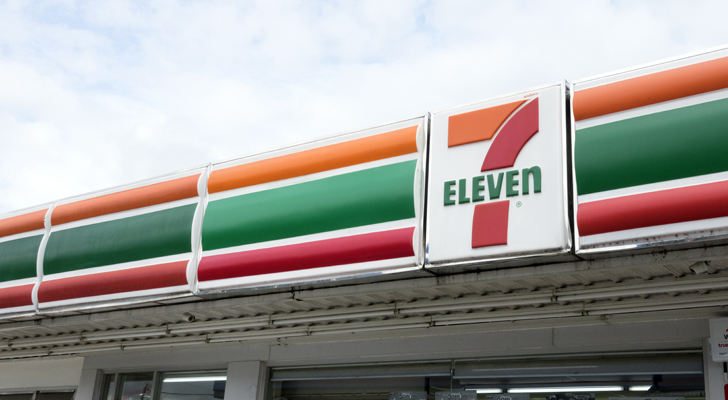As we’ve said before, retail is a minefield. Those firms that haven’t gotten a handle on omnichannel and online sales are being hurt while more successful retailers are gaining a serious advantage. This minefield has been playing out in the owners of retail real estate as well. There are plenty of retail REITs that are suffering right along with their tenants.
However, just like there’s a few J.C. Penny’s (NYSE:JCP) for every successful Amazon (NASDAQ:AMZN), there are some retail REITs that are getting things right as well.
Featuring shopping plazas in upper-middle to upper-class neighborhoods, quality tenant mixes and more destination shopping, as well as focusing on food/services, several retail REITs are getting it right and are thriving in the new market environment. And with omnichannel retailing growing fast, these REITs have the goods to keep on growing while several of their rivals fail, deal with empty storefronts and lower rents.
But which retail REITs are winning the war? Here are three top-notch retail property owners that continue to make the right moves.
Compare Brokers

 Source: Shutterstock
Source: Shutterstock Retail REITs That Are Winning: KIMCO Realty (KIM)
Dividend Yield: 6.4%
It’s not every day that you can score a 6%-plus yield from a top-notch stock, but that’s exactly the case with KIMCO Realty (NYSE:KIM). KIM is one of the nation’s largest owners of retail real estate and is unfairly being lumped in with other, poorer-quality retail REITs.
For starters, KIMCO doesn’t troubled shopping malls. It owns so-called open-air shopping plazas, power centers, and other similar style assets. These retail assets generally house more necessity style businesses such as hair salons, restaurants, and grocery stores. In the wake of the retail apocalypse, these sorts of locations continue to thrive. According to KIM, its occupancy rate clocked in at over 95% throughout 2018.
Secondly, the quality and location of KIM’s assets has improved dramatically over the years. Seeing the writing on the wall, KIMCO started to sell its less-desirable assets long before the retail problems begun to hit. As a result, this now-pruned portfolio is located in more affluent areas of the country. This “signature series” of properties feature more restaurants and shops that cater to higher-end customers. Plenty of Amazon-proof retailers dot these locations. Ironically, Amazon’s Whole Foods Market is one of KIM’s largest tenants.
Because of the different approach to retail, KIM is actually thriving. Renewal rental rates surged 10% last quarter — the 20th consecutive quarter of increases. This all do to KIMCO’s portfolio quality.
And now investors can score that quality with one of the stocks largest yields ever.
Compare Brokers

 Source: Shutterstock
Source: Shutterstock National Retail Properties (NNN)
Dividend Yield: 3.8%
The holy grails of REITs are so-called triple-net leased properties. In these properties, the responsibility of taxes, maintenance and other fees associated with renting the property are pushed onto the tenants. Without these extra costs, landlords are able to sit back and collect a much bigger rent check as none of that money needs to go towards these expenses. Operating in this space is National Retail Properties (NYSE:NNN).
The beauty for NNN is the bulk of its 2,900-plus portfolio are convenience stores, restaurants, and auto service stores. Top tenants include LA Fitness gyms, 7-Eleven, and Taco Bell franchises. What do these tenants have in common? They’re pretty much internet-proof and immune to the effects of online retailing. Like previously mentioned KIMCO, there’s no sign of the retail great dying here. National Retail Properties features an enviable occupancy rate of 99%. That fact that NNN has focused on higher income and prime areas of the country haven’t hurt on this fact either.
What triple-net leases and a high occupancy rate do is send plenty of cash back to investors as big dividends. National Retail Properties is considered a dividend aristocrat and has increased its payout every year for the past 29 years. This includes its last increase of 5.26% over the summer. And with its focus on freestanding and triple-net leased properties, those increases should keep coming for the REITs investors.
Compare Brokers

 Source: Yuriy Trubitsyn via Unsplash
Source: Yuriy Trubitsyn via Unsplash Urstadt Biddle (UBA)
Dividend Yield: 5.3%
When it comes to REITs, there’s a good chance that you’ve never heard of Urstadt Biddle (NYSE:UBA). But that could be a great thing. Like both KIM and NNN, UBA owns a portfolio of grocery/drugstore-anchored open air and freestanding real estate. But its footprint is smaller — much, much, much smaller. Urstadt owns only about 70 different properties. The key is where UBA owns them.
The REIT’s shopping plazas are located in a few of the most prime areas of the country: wealthy New York, New Hampshire and Connecticut suburbs just north of New York City. These regions feature some of the best consumer demographics, incomes and huge barriers to entry thanks to lack of available space and zoning laws. UBA has been operating in these areas since the 1960s and has a stronghold on some of the best turf around. So, if retailers want to tap these wealthy consumers — and they do — they have to give UBA a call.
Because of this foothold in a prime operating area, Urstadt Biddle features a high occupancy rate as well as high rent growth. That has done two things for UBA. One, it features a very conservative balance sheet with low debt. Secondly, it has made the REIT into a dividend champion. The firm’s latest 2.1% increase to its payout represents the 196th consecutive quarterly dividend. Urstadt Biddle currently yields 4.74%.
All in all, UBA is getting retail real estate right and represents a great REIT to buy to play the sector.
At the time of writing, Aaron Levitt held no position in any of the




 WHL | Getty Images
WHL | Getty Images  How American health care got so expensive 12:55 PM ET Wed, 13 Feb 2019 | 14:58
How American health care got so expensive 12:55 PM ET Wed, 13 Feb 2019 | 14:58 